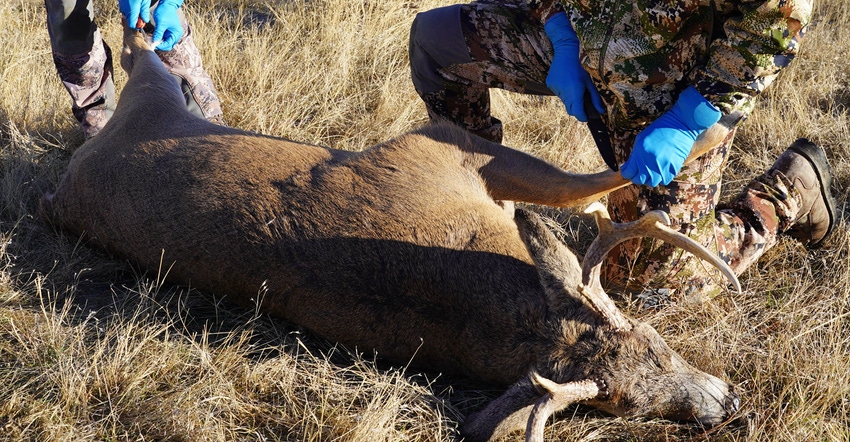November 27, 2019

The detection of chronic wasting disease in wild deer this year has some deer hunters wondering whether they should continue with their fall traditions.
It’s still OK to hunt but take precautions.
“They can continue to enjoy deer hunting and be safe if they follow guidelines set by the Pennsylvania Game Commission,” says Martin Bucknavage, senior Extension associate in food science at Penn State. “And, if they take a deer inside disease management areas in the state, they should have it tested for the disease before consuming venison.”
Chronic wasting disease is a neurological disease that has spread through wild deer herds throughout the U.S.
Information about disease management areas and getting deer tested for chronic wasting disease is available in the chronic wasting disease section of the Pennsylvania Game Commission’s website.
If you’re planning to hunt in an area where CWD is known to exist, follow these nine steps to protect yourself:
1. Do not shoot, handle or consume an animal that appears sick.
2. Wear rubber or nitrile gloves when field dressing.
3. Bone out the meat to remove high-risk parts such as the brain, spinal cord, spleen, tonsils and lymph nodes.
4. Avoid cutting into or through the backbone, either lengthwise or across the spine. Minimize the handling of brain and spinal tissues.
5. Thoroughly clean your hands and processing tools with soap and water, then sanitize tools in a solution of 50% household chlorine bleach and 50% water for one hour.
6. Ask your deer processor to process your meat individually or just process your own meat.
7. Have your animal processed in the area of the state where it was harvested so high-risk body parts can be disposed of properly. It is illegal to take high-risk parts out of any Pennsylvania Disease Management Area.
8. Don't consume high-risk parts. Normal field dressing, coupled with boning out a carcass, will remove most, if not all, high-risk parts. Cutting away all fatty tissue will remove remaining lymph nodes.
9. Have your animal tested and do not consume meat from any animal that tests positive for the disease.
“To date, according to the CDC, no chronic wasting disease infections have been reported in people,” Bucknavage says. “But if your animal tests positive for CWD, do not eat meat from that animal.”
The Centers for Disease Control and Prevention website states: “Animal studies suggest CWD poses a risk to some types of nonhuman primates, like monkeys, that eat meat from CWD-infected animals or come into contact with brain or body fluids from infected deer or elk. These studies raise concerns that there also may be a risk to people ... If CWD could spread to people, it would most likely be through the eating of infected deer and elk.”
“We just don’t know for sure about the risk to humans,” Bucknavage says. “But hunters play an important role in controlling CWD by keeping the deer population in check and culling potentially sick animals from the herd.”
Source: Penn State Cooperative Extension, which is solely responsible for the information provided and is wholly owned by the source. Informa Business Media and all its subsidiaries are not responsible for any of the content contained in this information asset.
You May Also Like




